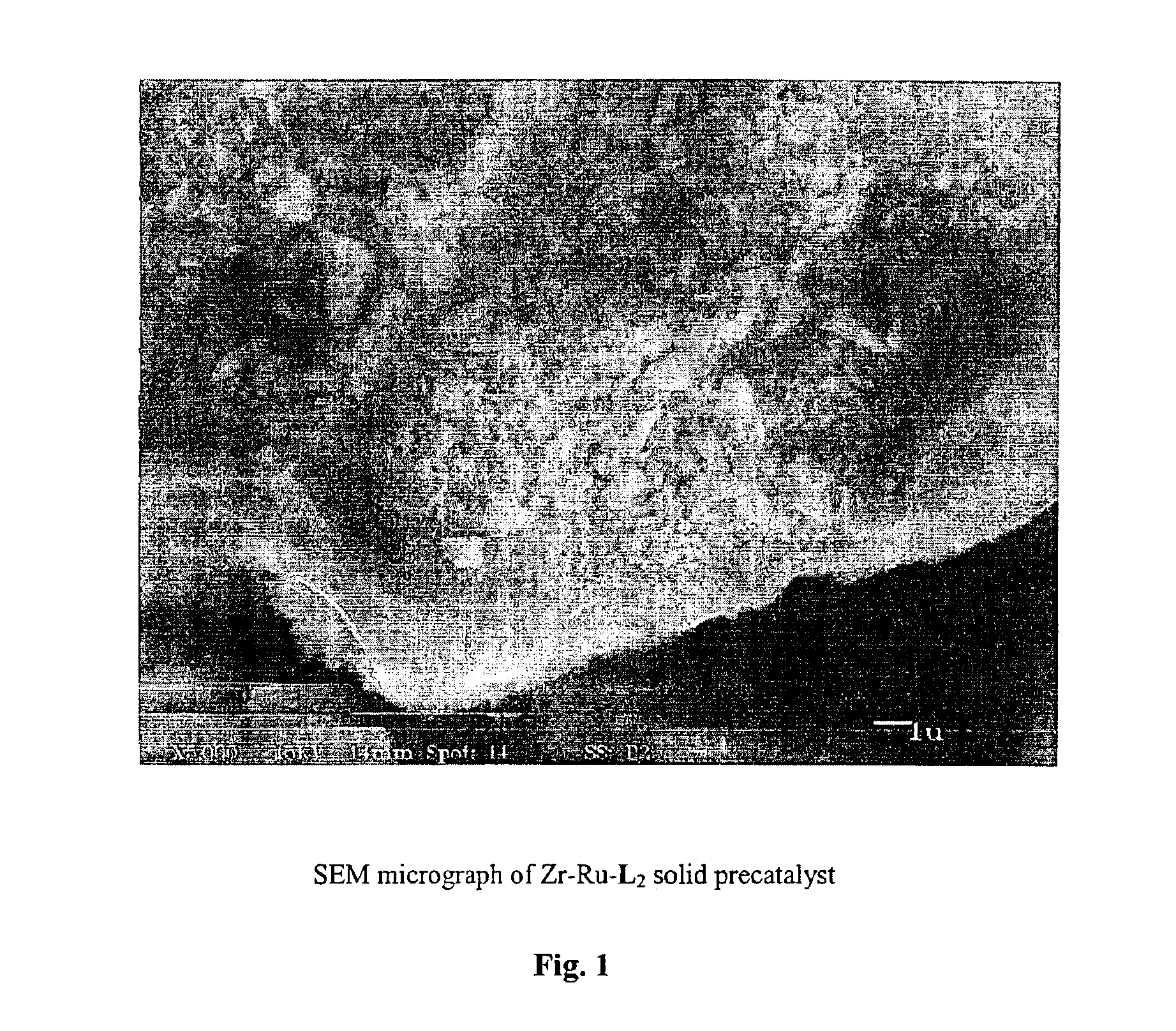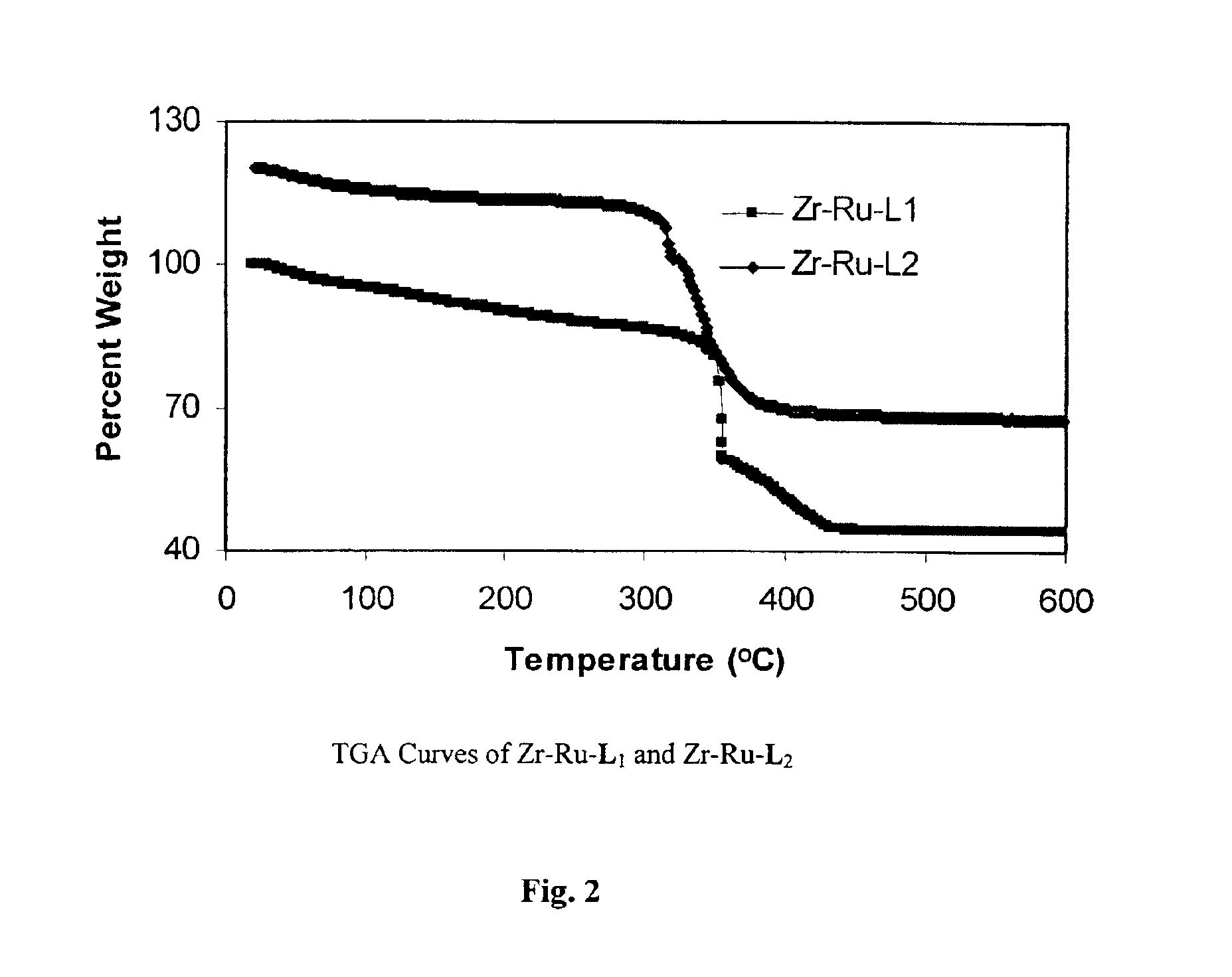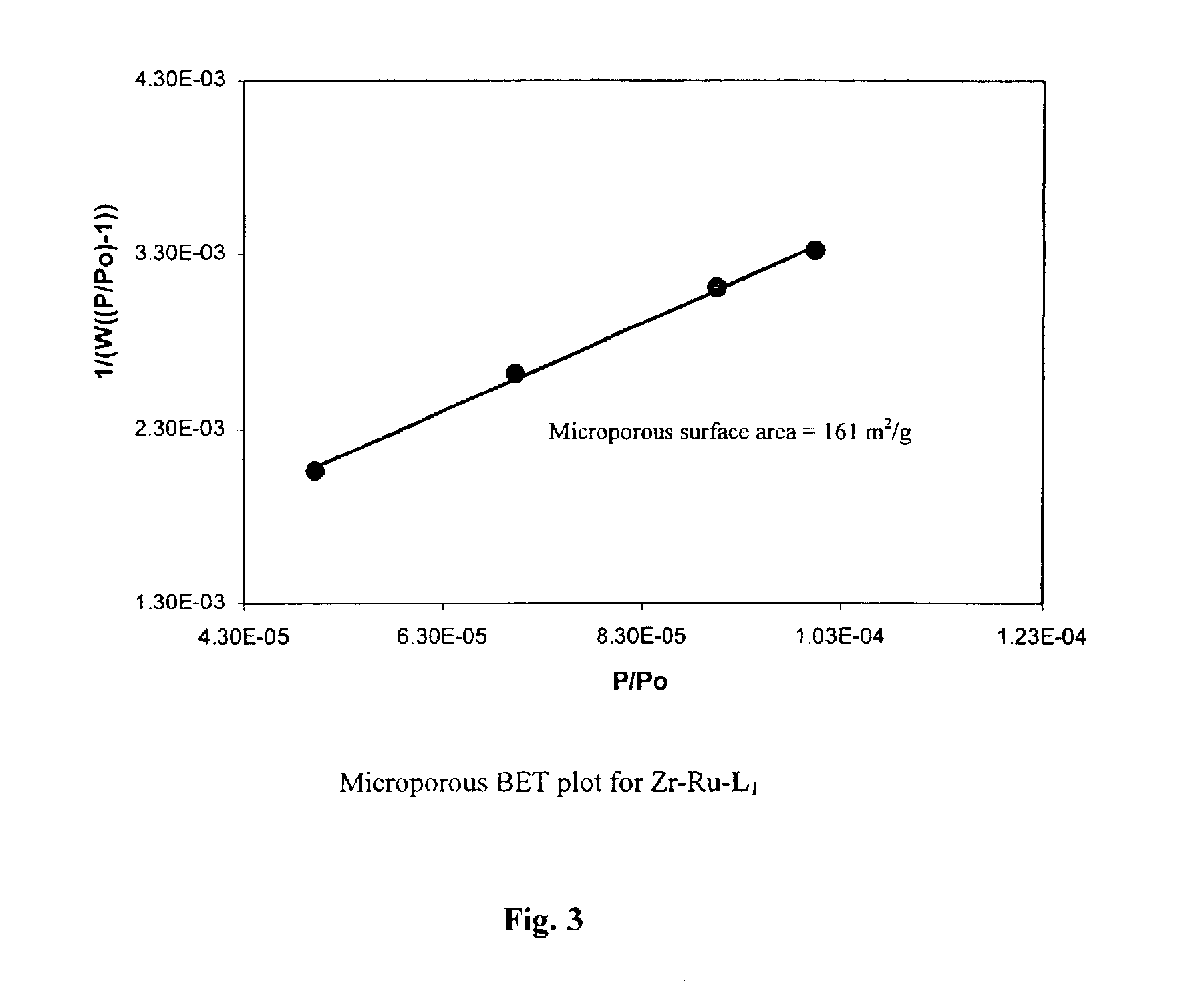Chiral porous metal phosphonates for heterogeneous asymmetric catalysis
a technology of porous metals and phosphonates, applied in the field of chiral porous metal phosphonates, can solve the problems of high cost of noble metals and chiral ligands, difficulty in removing trace amounts of metals from organic products, and hindering the application of homogeneous catalysts in many industrial processes
- Summary
- Abstract
- Description
- Claims
- Application Information
AI Technical Summary
Benefits of technology
Problems solved by technology
Method used
Image
Examples
example 1
Scheme 1 illustrates a process for obtaining a chiral porous metal phosphonate according to the present invention.
Enantiopure L1—H4 was synthesized in 3 steps starting from 2,2′-dihydroxy-1,1′-binaphthyl-6,6′-bis(diethylphosphonate) ) in 44% overall yield (Scheme 1). Phosphiation of 2,2′-bis(triflato)-1,1′-binaphthyl-bis(diethylphosphonate) was Ni-catalyzed. All the intermediates and L1—H4 were characterized by 1H, 13C{1H}, and 31P{1H} NMR spectroscopies and mass spectrometry. L2—H4 was synthesized according to a literature procedure. (M. Kant et al., Eur. J. Org. 477 (2001)).
Ru(L1—H4)(DMF)2Cl2 and Ru(L2—H4)(DMF)2Cl2 intermediates were synthesized by treating L1—H4 and L2—H4 with 0.46 equiv of [Ru(benzene)Cl2]2 in DMF at 100° C., respectively. Chiral porous zirconium phosphonates with approximate formulae Zr[Ru(L1)-DMF)2Cl2].2MeOH (Zr—Ru—L1) and Zr[Ru(L2)DMF)2Cl2].2MeOH (Zr—Ru—L2) were synthesized by refluxing Zr(OtBu)4 and 1 equiv of Ru(L1—H4)(DMF)2Cl2 and Ru(L2—H4)(DMF)2Cl2 in me...
example 2
Treatment of (R)-2,2′-bis(diphenylphosphino)-1,1′-binaphthyl-4,4′-bis(phosphonic acid), L2—H4, with [Ru(benzene)Cl2]2 followed by (R,R)-DPEN afforded the phosphonic acid-substituted Ru-BINAP-DPEN intermediate, which was directly reacted with Zr(OtBu)4 under reflux conditions to give chiral porous Zr phosphonate of the approximate formula Zr[Ru(L2)(DPEN)Cl2].4H2O (Zr—Ru—L2-DPEN). The solid precatalyst Zr—Ru—L1-DPEN with a 6,6′-disubstituted BINAP was similarly prepared, and also has an approximate formula of Zr[Ru(L1)(DPEN)Cl2].4H2O. These chiral porous Zr phosphonates have been characterized with a variety of techniques including thermal gravimetric analysis (TGA), adsorption isotherms, x-ray diffraction (XRD), scanning electron micrography (SEM), infrared spectroscopy (IR), and microanalysis. (FIGS. 12-22) The scheme for production is shown below.
TGA results (FIG. 14) indicated that Zr—Ru—L2-DPEN and Zr—Ru—L1-DPEN lost 5.1% and 5.4% of their weights by 200° C. respectively, corres...
PUM
| Property | Measurement | Unit |
|---|---|---|
| charge neutrality | aaaaa | aaaaa |
| optically active | aaaaa | aaaaa |
| SEM | aaaaa | aaaaa |
Abstract
Description
Claims
Application Information
 Login to View More
Login to View More - R&D
- Intellectual Property
- Life Sciences
- Materials
- Tech Scout
- Unparalleled Data Quality
- Higher Quality Content
- 60% Fewer Hallucinations
Browse by: Latest US Patents, China's latest patents, Technical Efficacy Thesaurus, Application Domain, Technology Topic, Popular Technical Reports.
© 2025 PatSnap. All rights reserved.Legal|Privacy policy|Modern Slavery Act Transparency Statement|Sitemap|About US| Contact US: help@patsnap.com



